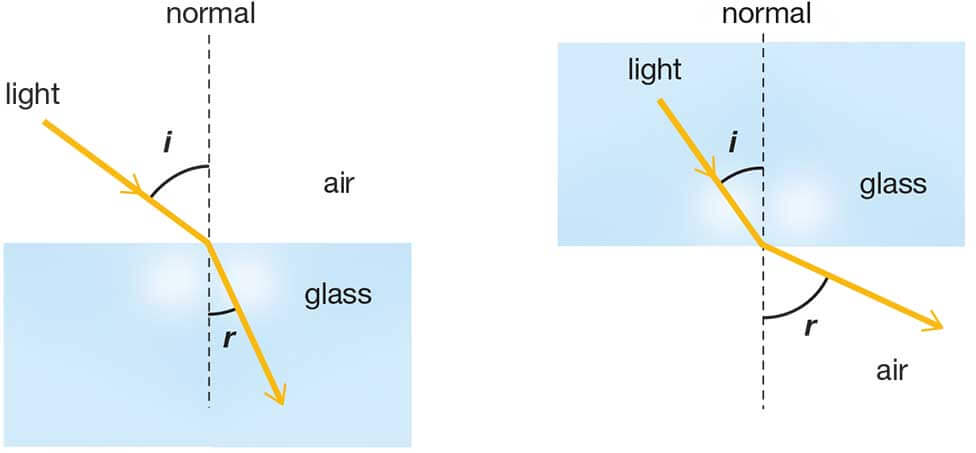Topic Content:
- Refraction of Light
- Types of Curved Surfaces
Refraction is the change in the direction of a light ray when it travels from one medium to another.

Light passing from a less dense to a more dense medium bends toward the normal (diagram on the left above). Light passing from a more dense to a less dense medium bends away from the normal (diagram on the right above).
You are viewing an excerpt of this Topic. Subscribe Now to get Full Access to ALL this Subject's Topics and Quizzes for this Term!
Click on the button "Subscribe Now" below for Full Access!
Subscribe Now
Note: If you have Already Subscribed and you are seeing this message, it means you are logged out. Please Log In using the Login Button Below to Carry on Studying!



Responses